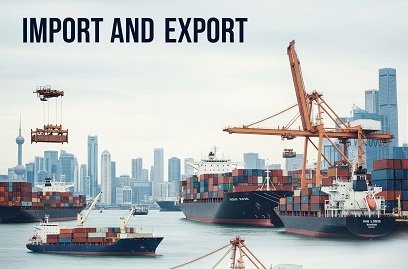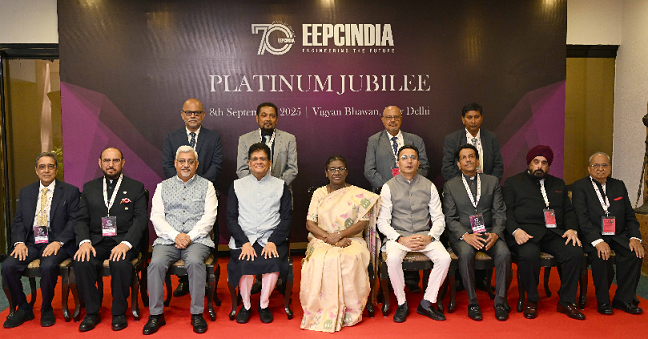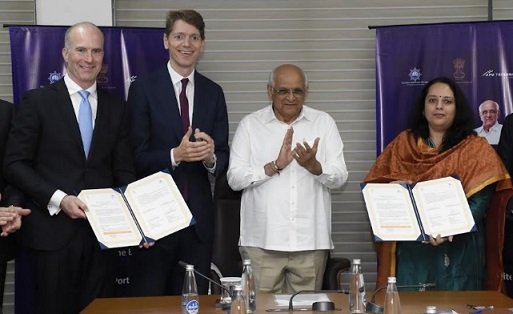Last Updated on August 1, 2025 1:51 pm by BIZNAMA NEWS
R. Suryamurthy
India faces a major setback to its export ambitions as the United States imposed a 25% tariff on most Indian-origin goods, a move that could slash bilateral trade and unsettle key sectors such as pharmaceuticals, electronics, and textiles.
The tariff, effective August 7, was part of a broader U.S. trade realignment announced by an executive order on July 31. India, which shipped goods worth $86.5 billion to the U.S. in FY2025, now risks seeing that figure drop by as much as 30% in FY2026, according to a report by the Global Trade Research Initiative (GTRI).
The U.S. action, widely viewed as part of President Donald Trump’s revived protectionist playbook, came despite ongoing trade discussions with New Delhi. Goods already in transit to the U.S. by October 5 will be temporarily shielded, facing earlier tariff rates of around 10%—but new shipments from October 7 onward will be hit fully by the new regime.
Pharma, Electronics Exempt—But Not Immune
Key sectors such as finished pharmaceutical drugs, active pharmaceutical ingredients (APIs), energy products, and electronics have been exempted from the 25% levy. However, industry voices in India argue that the damage goes beyond the tariff list.
“Pharma and electronics may have dodged the immediate tariff bullet, but the uncertainty introduced by this move is corrosive,” said Sanjaya Mariwala, Executive Chairman of OmniActive Health Technologies. “India is a backbone of affordable global healthcare, and disruptions here will inflate U.S. drug costs and potentially delay critical treatments.”
Mariwala warned that domestic pharmaceutical firms, already facing tight margins, may see profits dip and R&D slow—compromising future drug innovation. “This is a wake-up call. India must aggressively pursue Free Trade Agreements (FTAs) with Europe, ASEAN, and other blocs to insulate its economy.”
Textile Sector Hit Hard
The textiles industry, already under pressure from regional rivals, is bracing for impact. “This tariff gives Vietnam a price edge, as they face only a 20% duty. India’s textile competitiveness just took a hit,” said Shashi Mathews, Partner at CMS IndusLaw.
With the U.S. absorbing nearly a third of India’s pharmaceutical exports and being a top buyer of Indian textiles, the new tariffs are expected to trigger a reorientation of India’s trade strategies. Mathews urged exporters to diversify to markets where FTAs are already in place, including the UAE, Australia, and ASEAN countries.
India’s Trade Autonomy at Stake
While Washington signaled that tariff reductions could follow bilateral trade deals, New Delhi is unlikely to rush into concessions.
“This is not just economic—it’s strategic,” said a senior Indian official familiar with the government’s position. “India will protect its autonomy, even as it keeps the window open for negotiation.”
Meanwhile, Ajay Srivastava, co-founder of GTRI, said the tariff escalation marks a “tipping point” in India-U.S. trade relations. “The optics and timing of this move—targeting India while granting EU a special carve-out—indicate that strategic leverage is being wielded aggressively. India must respond with long-term recalibration, not knee-jerk retaliation.”
Global Context: India Among 25% Club
Alongside India, countries such as Brunei, Moldova, Kazakhstan, and Tunisia will also face the 25% tariff slab. Some nations like Switzerland (39%), Laos (40%), and Syria (41%) received even steeper hikes, largely tied to geopolitical or trade surplus concerns.
The EU, however, received a special concession: if a product’s MFN (most-favoured nation) tariff is below 15%, the U.S. will cap it at that level, avoiding additional duties. No such relief has been extended to India.
While India has not announced retaliatory measures, officials say the government is evaluating its options. For now, the emphasis remains on fortifying alternate trade corridors and accelerating domestic manufacturing under the ‘Make in India’ and ‘Viksit Bharat’ vision.
“The message is clear,” said Mariwala. “In a world of shifting alliances, India must secure its own seat at the table—not wait to be invited.”



